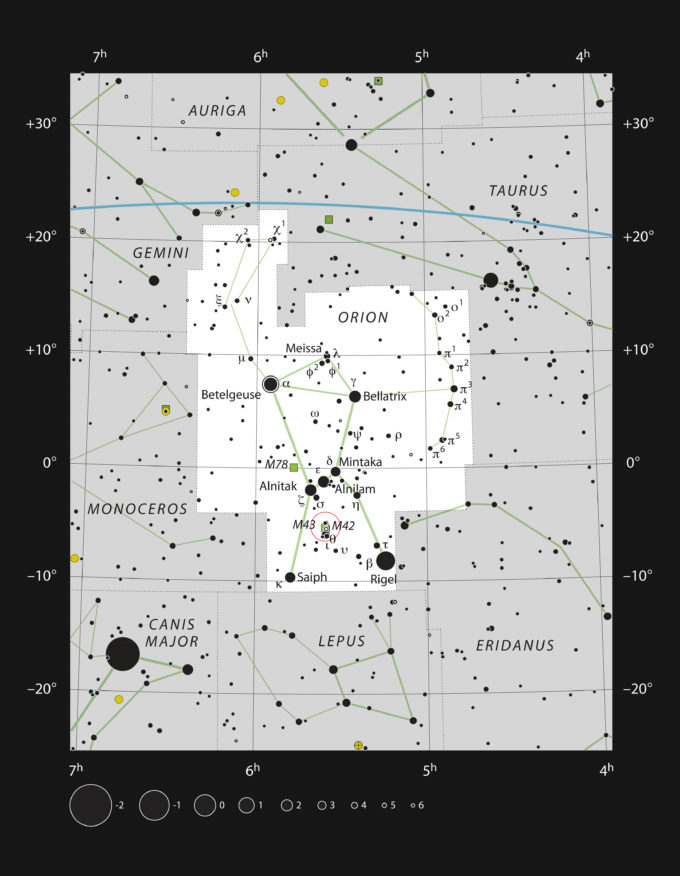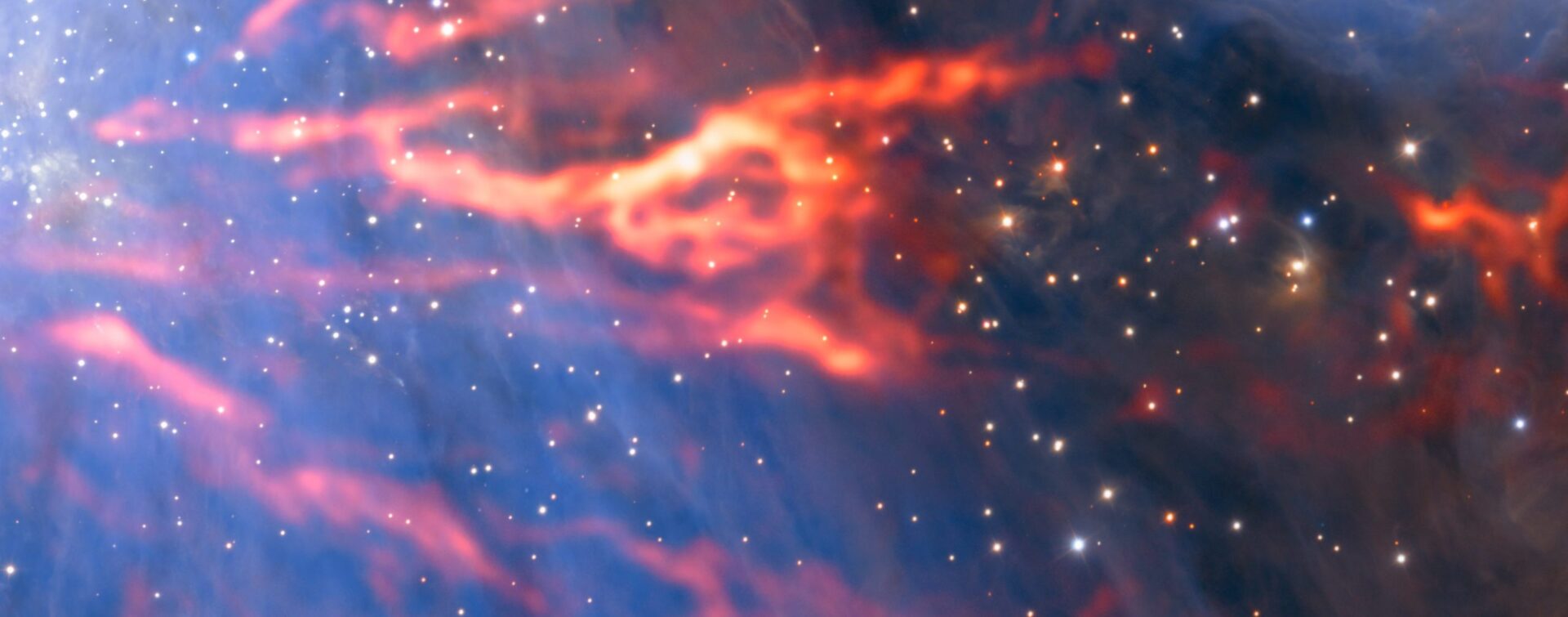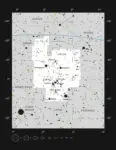ALMA Reveals Inner Web of Stellar Nursery
New data from the Atacama Large Millimeter/submillimeter Array (ALMA) and other telescopes have been used to create this stunning image showing a web of filaments in the Orion Nebula. These features appear red-hot and fiery in this dramatic picture, but in reality are so cold that astronomers must use telescopes like ALMA to observe them.
This spectacular and unusual image shows part of the famous Orion Nebula, a star formation region lying about 1350 light-years from Earth. It combines a mosaic of millimeter-wavelength images from the Atacama Large Millimeter/submillimeter Array (ALMA) and the IRAM 30-meter telescope, shown in red, with a more familiar infrared view from the HAWK-Instrument on ESO’s Very Large Telescope, shown in blue. The group of bright blue-white stars at the upper-left is the Trapezium Cluster — made up of hot young stars that are only a few million years old.
The wispy, fiber-like structures seen in this large image are long filaments of cold gas, only visible to telescopes working in the millimeter wavelength range. They are invisible at both optical and infrared wavelengths, making ALMA one of the only instruments available for astronomers to study them. This gas gives rise to newborn stars — it gradually collapses under the force of its own gravity until it is sufficiently compressed to form a protostar — the precursor to a star.

This spectacular and unusual image shows part of the famous Orion Nebula, a star formation region lying about 1350 light-years from Earth. It combines a mosaic of millimetre wavelength images from the Atacama Large Millimeter/submillimeter Array (ALMA) and the IRAM 30-metre telescope, shown in red, with a more familiar infrared view from the HAWK-I instrument on ESO’s Very Large Telescope, shown in blue. The group of bright blue-white stars at the left is the Trapezium Cluster — made up of hot young stars that are only a few million years old. Credit: ESO/H. Drass/ALMA (ESO/NAOJ/NRAO)/A. Hacar
The scientists who gathered the data from which this image was created were studying these filaments to learn more about their structure and make-up. They used ALMA to look for signatures of diazenylium gas, which makes up part of these structures. Through doing this study, the team managed to identify a network of 55 filaments.
The Orion Nebula is the nearest region of massive star formation to Earth and is therefore studied in great detail by astronomers seeking to better understand how stars form and evolve in their first few million years. ESO’s telescopes have observed this interesting region multiple times, and you can learn more about previous discoveries here, here, and here.
This image combines a total of 296 separate individual datasets from the ALMA and IRAM telescopes, making it one of the largest high-resolution mosaics of a star formation region produced so far at millimeter wavelengths [1].

This chart shows the location of the Orion Nebula (Messier 42) in the sword of the famous constellation of Orion (the Hunter). This map shows most of the stars visible to the unaided eye under good conditions and the Orion Nebula itself is highlighted with a red circle on the image. This grand star formation region can be seen with the unaided eye and is an impressive sight in moderate-sized amateur telescopes.
Notes
[1] Earlier mosaics of Orion at millimeter wavelengths had used single-dish telescopes, such as APEX. The new observations from ALMA and IRAM use interferometry to combine the signals from multiple, widely-separated antennas to create images showing much finer detail.
Additional information
ALMA is a partnership of ESO (representing its member states), NSF (USA) and NINS (Japan), together with NRC (Canada), MOST and ASIAA (Taiwan), and KASI (Republic of Korea), in cooperation with the Republic of Chile. The Joint ALMA Observatory is operated by ESO, AUI/NRAO, and NAOJ.
Contacts
-
Nicolás Lira
Education and Public Outreach CoordinatorJoint ALMA Observatory, Santiago - ChilePhone: +56 2 2467 6519Cel: +56 9 9445 7726Email: [email protected] -
Richard Hook
Public Information Officer, ESOGarching bei München, GermanyPhone: +49 89 3200 6655Cel: +49 151 1537 3591Email: [email protected]


